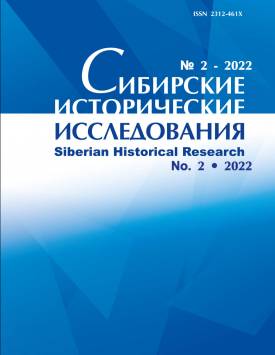The Impact of the Coronavirus Crisis on the European Union: A Spatial Autocorrelation Analysis
The authors approach COVID-19 as a perfect stress test for revealing integration connectivity within the European Union. The current crisis has challenged the resilience of regional integration, and reveals the economic connectivity within the integration blocks and their consolidating power. The goal of the research paper is to analyze the collective behaviour of the integrating countries during the external epidemiological crisis and their capability to respond to the manifestations of the crisis as ‘an organic whole’. The authors develop the existing academic discourse on the de-facto effects of integration and the relationship between the national and collective interests of the integrating countries, which has become the subject of fierce controversy during the pandemic. The research is based on the original concept of the stability of regional integration during the period of external crises associations proposed by the authors. To achieve the research goal of determining the degree of spatial correlation, the authors calculated Moran’s Spatial Autocorrelation Index and the multi-factor Geary’s Index. The spatial and econometric analysis of the EU countries in times of COVID-19 made the authors conclude that the initial EU’s response to the pandemic reflected nationalist self-help strategies rather than joint European approach during the earlier stages of the pandemic. Nevertheless, the EU demonstrated relatively strong intraregional trade resistance and ability to mitigate the negative consequences of the COVID-19 pandemic. The authors declare no conflicts of interests.
Keywords
COVID-19,
Europe,
regional integration,
spatial analysisAuthors
| Okunev Igor Yu. | MGIMO-University | |
| Arapova Ekaterina Ya. | MGIMO-University | e.arapova@my.mgimo.ru |
| Nikitina Yulia A. | MGIMO-University | |
Всего: 3
References
Zhou, Ch., Suace F., Tao Pei, An Zhanga, Yunyan Du, Bin Luo, Zhidong Cao, Juanle Wang, Wen Yuan, Yunqiang Zhu, Ci Song, Jie Chen, Jun Xu, Fujia Li, Ting Ma, Lili Jiang, Fengqin Yan, Jiawei Yi, Yunfeng Hu, Yilan Liao, and Han Xiao (2020) COVID-19: Challenges to GIS with Big Data. Geography and Sustainability, Vol. 1, no. 1, pp. 77-87.
Yin, L., Zestos, G. and L. Michelis. (2003) Economic Convergence in the European Union. Journal of Economic Integration, no. 18(1), pp. 188-213.
Tobler, W.R. (1970). A Computer Movie Simulating Urban Growth in the Detroit Region. Economic Geography 46, Supplement: Proceedings. International Geographical Union. Commission on Quantitative Methods, pp. 234-240.
Schadler, S., Mody A., Abiad A., and Leigh D. (2006) Growth in the Central and Eastern European Countries of the European Union. International Monetary Fund, Washington, DC.
Recher, V., and Kurnoga N. (2017) European integration perspectives: From cohesion to divergence? Acta Oeconomica, no. 67, pp. 195-214.
Sawada, M. Global Spatial Autocorrelation Indices - Moran’s I, Geary’s C and the General Cross-Product Statistic. University of Ottawa: Laboratory of Paleoclimatology and Climatology, Dept. Geography. Available at: http://www.lpc.uottawa.ca/publications/moransi/moran.htm
Ord, J. K., and Getis A. (1995) Local Spatial Autocorrelation Statistics: Distributional Issues and an Application. Geographical Analysis, Vol. 27, no. 4, pp. 286-306.
Neven, D., and Gouymte C. (1995) Regional Convergence in the European Community. Journal of Common Market Studies, no. 33(1), pp. 47-65.
Munasinghe, R. L., and Morris R.D. (1996) Localization of Disease Clusters Using Regional Measures of Spatial Autocorrelation. Statistics in Medicine, Vol. 15, no. 7-9, pp. 893-905.
Moran, P.A.P. (1948) The Interpretation of Statistical Maps. Journal of the Royal Statistical Society. Series B (Methodological), Vol. 10, no. 35, pp. 255-260.
Marshall, R.J. (1991) Mapping Disease and Mortality Rates Using Empirical Bayes Estimators. Applied Statistics, Vol. 40, no. 2, pp. 283-294.
Halmai, P., and Vásáry V. (2010) Real convergence in the new Member States of the European Union (Shorter and longer term prospects). The European Journal of Comparative Economics, no. 7, pp. 229-253.
Dodds, K., Castan Broto V., Detterbeck K., Jones M., Mamadouh V., Ramutsindela M., Varsanyi M., Wachsmuth D., and Woon Ch.Y. (2020) The COVID-19 pandemic: territorial, political and governance dimensions of the crisis. Territory, Politics, Governance, Vol. 8, no. 3, pp. 289-298. doi: 10.1080/21622671.2020.1771022.
Cliff, A., and Ord J.K. (1973) Spatial Autocorrelation. London: Pion.
Cuestas, J.C., Mercedes M., and Ordonez M. (2012) Real Convergence in Europe; A Cluster Analysis. Sheffield Economic Research Paper Series 2012023. Sheffield: University of Shefield.
Ben-David, D. (1993) Equilizing Exchange: Trade Liberalization and Income Convergence. The Quarterly Journal of Economics, no. 108, pp. 653-680.
Arapova, E. (2015) Measuring “Integration Potential” of the Free Trade Area of the Asia Pacific. Malaysian Journal of Economic Studies, no. 2, pp. 157-185.
Bailey, D., Clark J., Colombelli A., Corradini C., Propris L., Derudder D., Fratesi U., Fritsch M., Harrison J., Hatfield M., Kemeny T., Kogler D.F., Lagendijk A., Lawton Ph., Ortega-Argilés R., Otero C.I., and Usai S. (2020) Regions in a time of pandemic. Regional Studies, Vol. 54, no. 9 pp. 1163-1174, doi: 10.1080/00343404.2020.1798611.
Anselin, L. (2019) A local indicator of multivariate spatial association: extending Geary’s C. Geographical Analysis, no. 51(2), pp. 133-150.
Anselin, L. (1995) Local Indicators of Spatial Association - LISA. Geographical Analysis, no. 27, pp. 93-115.

